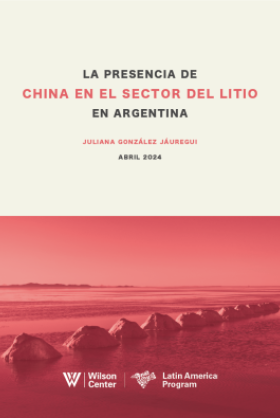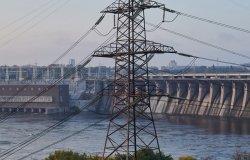Pakistan’s Other National Struggle: Its Energy Crisis
"Pakistan’s energy crisis is rooted in such a complex and interrelated web of causes (including but not limited to crushing sectoral debt, gross mismanagement, and dysfunctional institutions) that there is little consensus on what needs to be done and how," writes Michael Kugelman.
Pakistan’s status as a magnet for militancy and its struggles with terrorists are well known. Less discussed are the energy challenges facing that South Asian nation. Yet those struggles, though of a different nature than terrorism, are just as serious.
Energy insecurity, as I describe in a new Wilson Center report, “Pakistan’s Interminable Energy Crisis,” is unrelenting. In recent years, power shortfalls in Pakistan have approached 50% of national demand. Even in an era of cheap global oil, electricity shortages of several thousand megawatts are the norm. Last month in the mega-city of Karachi, some households had no electricity for more than 12 hours a day.
Pakistan’s energy future is also deeply disturbing: Within the next few years, Pakistan’s peak power demand is likely to exceed current installed capacity by nearly 10,000 megawatts. Total energy demand will nearly double in the next 10 years, and quadruple in the next 60.
Meanwhile, terrorism is a constant in Pakistan, though the frequency of attacks has declined in recent months. The number of civilian deaths from terrorism through the first half of 2015 was about half that of the same period in 2014. This improvement is related at least in part to the counterterrorism offensive the Pakistani military launched in North Waziristan last year.
Still, attacks on religious minorities are unending, and Islamic State continues to make inroads. Militants uprooted by the North Waziristan offensive are likely to find new sanctuaries and initiate new campaigns of violence. Overall, Pakistan’s radicalized society offers an enabling environment for extremism.
Although energy problems don’t directly kill or maim the way that terrorism does, they can still be related to loss of life. Power shortages contributed to the death tolls during last month’s heat wave; more than 1,200 people died. Hundreds of thousands—and possibly more—in Pakistan are directly and deleteriously affected by energy problems. When militants blow up energy infrastructure, they can plunge nearly the entire nation into darkness. When a single transmission line conductor fails, large portions of a major city can go dark–as happened in Karachi on Tuesday. Closures of hundreds of power-less factories have ended thousands of jobs. Gas shortages prevent people from cooking. Power-short hospitals curtail services and imperil public health.
And much as terrorism drives away potential foreign investors, energy shortages can induce existing foreign investors to leave: In recent years, by some estimates, Pakistan’s energy crisis has cost its economy 2% to 2.5% of GDP annually. Moody’s ratings group warned this year that energy shortages will damage Pakistan’s credit worthiness.
Even though eliminating terrorism is no simple matter, necessary correctives are clear, if unlikely to be implemented. These include ending state sponsorship of militancy, cutting off terrorist financing sources, and developing and disseminating counter-narratives to undercut entrenched extremist ideologies.
Conversely, Pakistan’s energy crisis is rooted in such a complex and interrelated web of causes (including but not limited to crushing sectoral debt, gross mismanagement, and dysfunctional institutions) that there is little consensus on what needs to be done and how. And as with terrorism, powerful political interests constrain the implementation of critical policy solutions. For example, establishing a new overarching energy ministry could bring some order to a chaotic and uncoordinated sector. Such a move would, however, be heavily resisted by the dozen-plus public-sector entities focused on energy.
The upshot of all this? In Pakistan, energy warrants as much attention as extremism.
The opinions expressed here are solely those of the author.
This article was originally published in The Wall Street Journal.
About the Author


Indo-Pacific Program
The Indo-Pacific Program promotes policy debate and intellectual discussions on US interests in the Asia-Pacific as well as political, economic, security, and social issues relating to the world’s most populous and economically dynamic region. Read more










